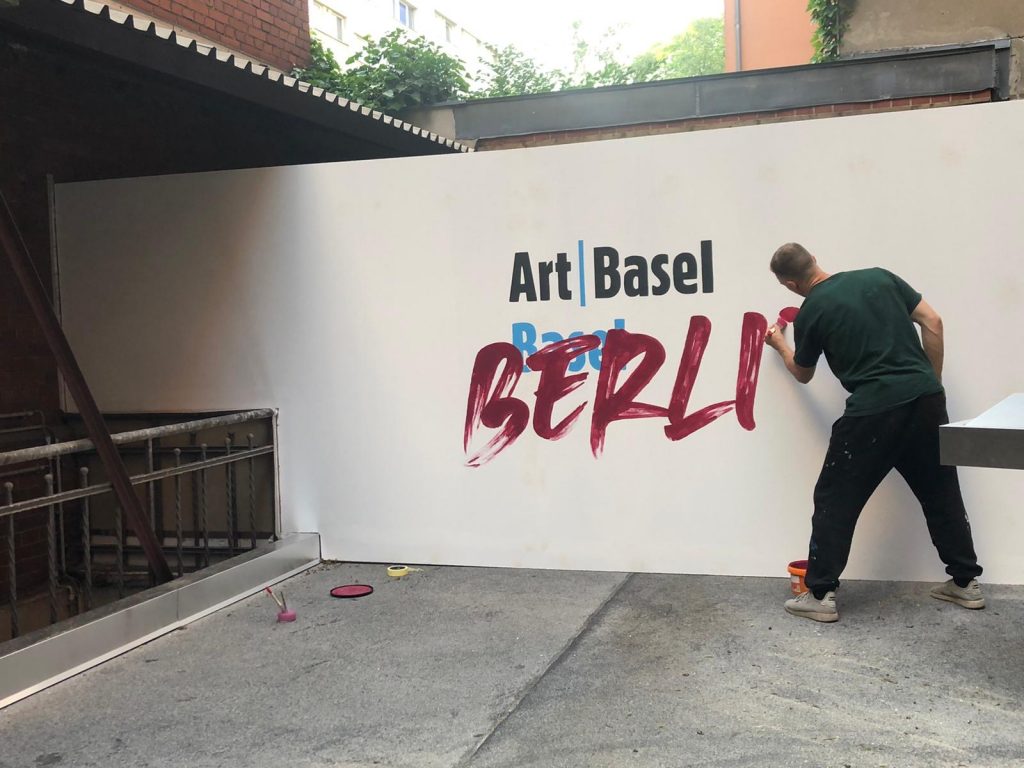While dealers around the world were wringing their hands yesterday, wondering if Art Basel’s Online Viewing Room would deliver with all its tweaks and toggles since its first tech-addled edition for Hong Kong in March, art dealers in Berlin were hosting analogue versions of their Basel booths at their physical galleries.
The event, Basel by Berlin, was planned in less than two weeks after a few dealers test-ran the idea this past spring in Berlin, where many lockdown restrictions have been lifted. “It brings back a little of the Eros we are missing,” says Daniel Wichelshaus from Société. The 32 participants are even hosting an “exhibitor dinner” tonight as an homage to the festivities they’d normally be enjoying any other year.
How does one install an art fair booth in a gallery? The brief was open to wide interpretation. Dealers were careful not to erode the church-and-state division between a fair stand and a gallery exhibition, placing cues, like tiny fair tables or wall labels, around their spaces.
At Galerie König, Johann König hosted a jam-packed salon-style show, with labels listing prices and acquiring red dots through the day as smiling staff cruised around the corridors with fair badges dangling from their necks. König had called up collectors and dealers all over Germany and asked them if they were interested in selling something—they were, and so his space was dedicated to secondary-market works.
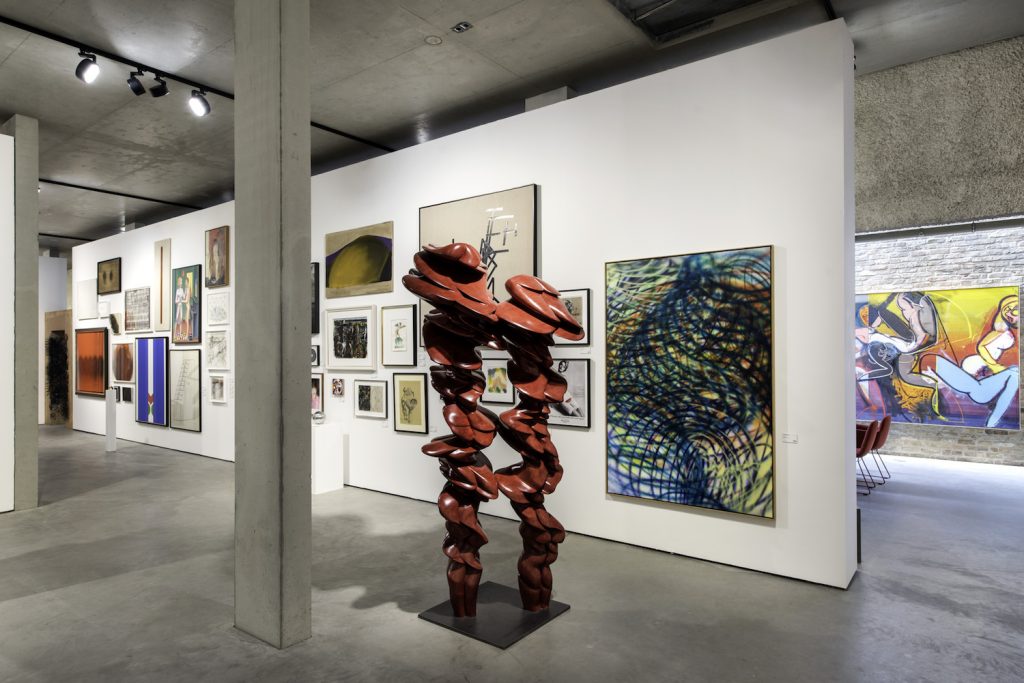
Galerie König’s art fair. Courtesy of the KÖNIG GALERIE Berlin, London, Tokyo. Photo: Trevor Lloyd.
“I think this is a good alternative to auction houses,” he tells Artnet News, sitting in front of a large Daniel Richter painting. “It doesn’t risk getting bought in and if the work doesn’t sell, it’s still market-fresh.”
He checks his phone intermittently to keep an eye on the VIP access to the Basel Online Viewing Rooms. But he seems more excited about what is happening within his gallery walls.
“A good day at Art Basel is the day where you can’t take a bite of your sandwich! That’s what it has been like here,” he says.
Carlier | gebauer presented a replica of their booth concept, although some works were absent due to shipping complications. “We wanted to make the Online Viewing Room experience more tangible,” says Marie-Blanche Carlier, who co-organized the event with galleries Mehdi Chouakri and ChertLüdde. “This is fun, it’s real, and it’s reactive.”
The event has Art Basel global director Marc Spiegler’s blessing. Dealers report that he was very supportive of the initiative. In an opinion piece in the Financial Times this week, Spiegler offered public praise: “Perhaps most interesting is the clicks-and-mortar approach many galleries are concurrently planning,” he wrote, citing the analogue event in Berlin… [C]ollectors can actually see the works “hanging” on the Art Basel platform.”
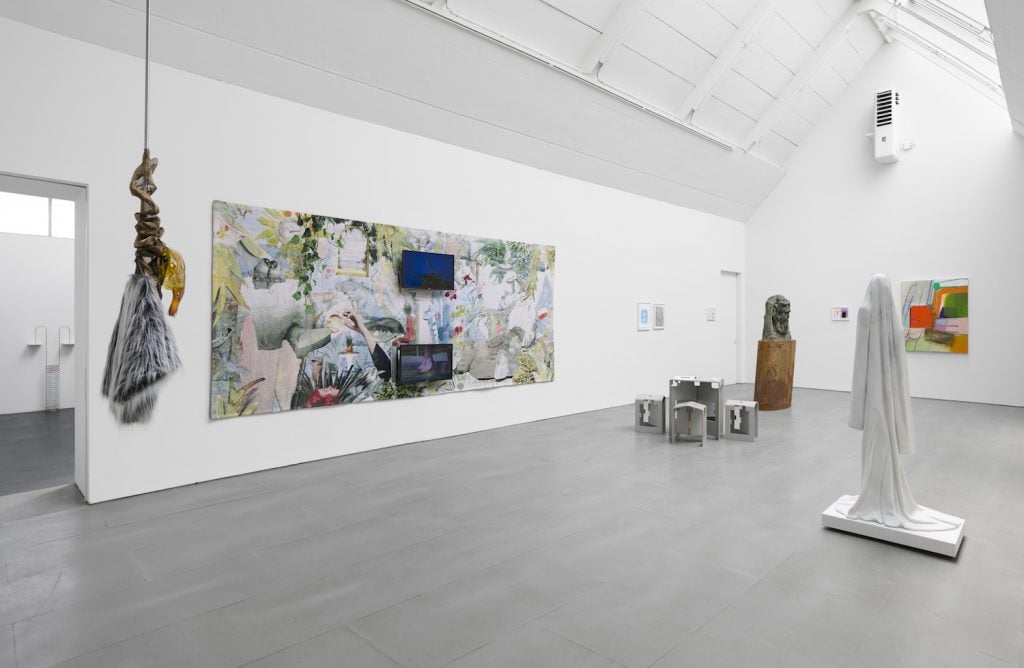
Installation view of carlier | gebauer’s Art Basel booth. Courtesy carlier | gebauer. Photo: Trevor Goode.
The blending of physical art with digital tools—call it bricks-and-clicks or clicks-and-mortar—is probably the future going forward, say many dealers. Carlier praises viewing rooms for their ability to “handle” works that physical booths may not have been able to, while being able to walk collectors through their gallery on FaceTime helps its ability to connect collectors to works. In fact, the ability to call in collectors and show them works over the phone seemed like the main reason for the event. “A bricks-and-clicks approach is the way forward,” Carlier said, echoing Spiegler.
Collectors were around, mostly from Berlin and a peppering from elsewhere. Dealers reported that enthusiastic clients were indeed venturing in from the neighboring cities of Hannover, Hamburg, Munich, and in some cases, from Belgium, London, and Switzerland (one collector was stopped at the Swiss-German border due to heightened migration restrictions, but received a letter from a gallerist that allowed him to pass through.)
“We can react immediately to collector feedback while providing them closeups with works and showing them details of the pieces,” she says. The gallery, choosing to make it fair-like with a small set of tables and chairs with business cards and a price list, showed a mix of works by Laure Prouvost, Amy Sillmann, and Thomas Schütte, among others. The latter two artists’ works were already sold when I stopped in around noon yesterday. A vibrant painting by Sillman sold for €550,000 ($561,000) and Schütte went for €380,000 ($426,000).
Face-to-face, with masks off, few gallerists said they were enthralled by the online viewing rooms. Toward the end of the day, one dealer shrugged as he said, yes, there were inquiries but they were from all the “same contacts.” Another said the bulk of the emails coming in were from Art Basel. The muted reply was echoed by many dealers who said emails trickled in, but business on the virtual “floor” was still a far cry from being as lucrative as in-person booths in Basel.
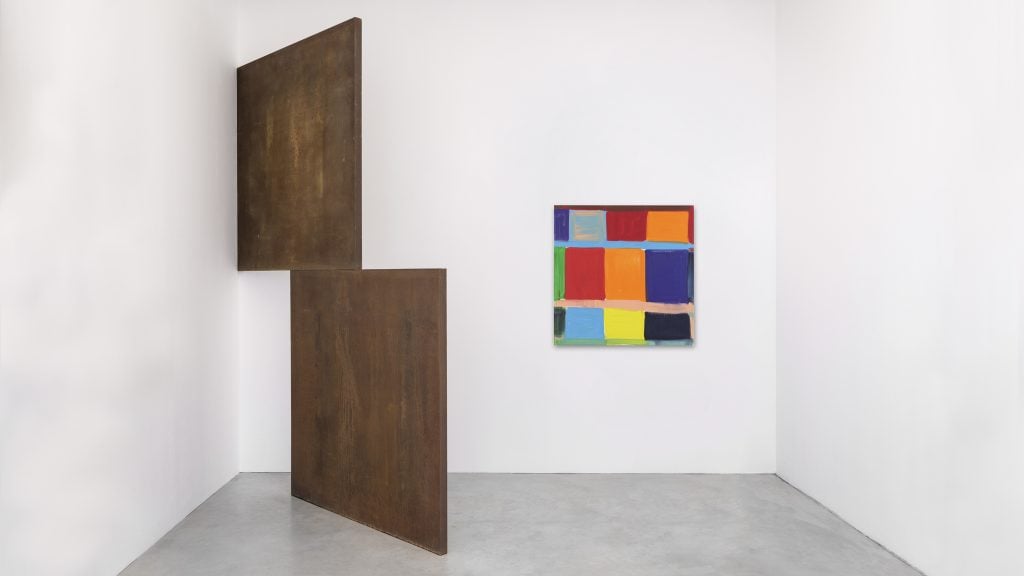
Richard Serra’s Step Up (1988) and Stanley Whitney’s Stay Song 67 (2019). Galerie Nordenhake, Berlin, Germany
Dealer Claes Nordenhake was roaming around his Berlin location as the gallery was finishing installing the monumental piece Step Up (1988) by Richard Serra, which will open on June 26 alongside other works from his Art Basel booth. Exceptional pieces by Imi Knoebel and Stanley Whitney were already in place as the gallery’s booth concept, “Orthodox Abstraction (and of course there was poetry),” was just going live online.
“I was rather skeptical in the beginning, thinking that only flat works by very well-known artists would function in this format,” he tells me the following day. “But there is something with the excellence of Art Basel that makes it work on different levels. There is of course a big difference from seeing a two-dimensional photo of a Richard Serra sculpture such as ours and experiencing it in an enclosed space in the gallery. The balance act of two tons of steel is a very physical experience.”
Judy Lybke from Eigen + Art was happy with the results of both the brick-and-mortar presentation and the online viewing platform. He had already test-piloted the latter, having rolled out his booth rolled in the gallery during Art Basel Hong Kong’s Online Viewing Room Though he says it is a loss for young artists. “New positions are key to have clients encounter in person. You may walk into my booth to see a work by Carsten Nicolai, and, bam, you see an emerging talent you did not know before,” he tells me. “It is a loss for young artists to miss this opportunity to really be at Basel.” Given that, he was pleased to sell two pieces by emerging artists Titus Schade and Kristina Schuldt, as well as works by Carsten Nicolai, Neo Rauch, and Tim Eitel.
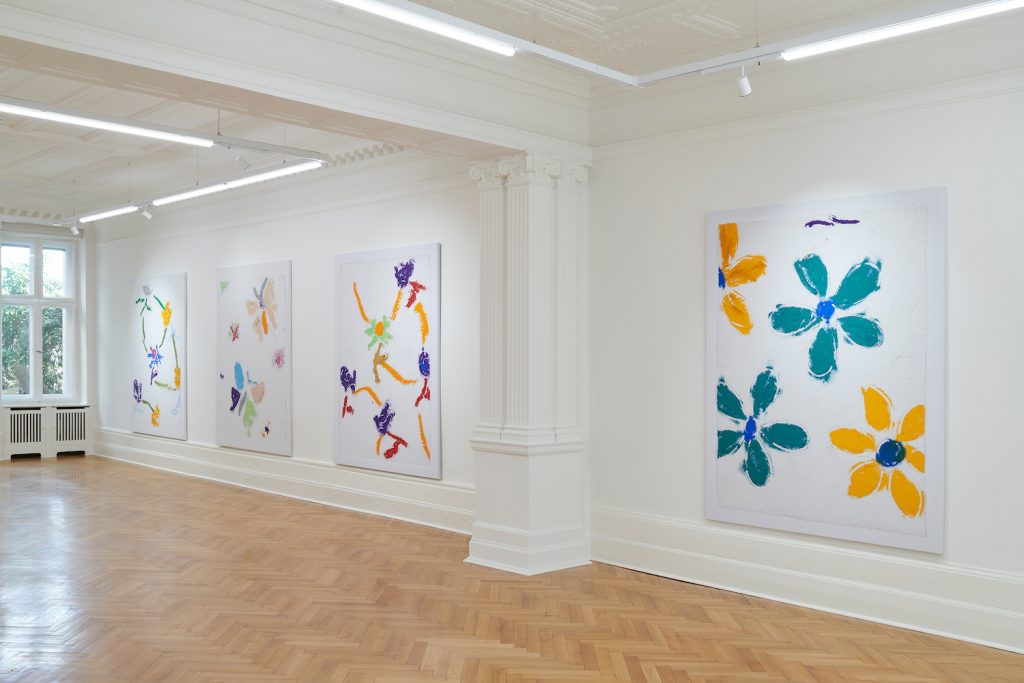
Kaspar Müller’s Mandala (2020). Courtesy: Société and the artist. © Société
Across town, Daniel Wichelshaus of gallery Société has just unveiled a sparkling new gallery space in a historic building in West Berlin, a stone’s throw from Prada and Gucci, and galleries like Daniel Buchholz. While he is on the participant list for Basel by Berlin, he opted to not put a fair booth in his brand-new space but to show a dozen or so new works by Kaspar Müller, which the artist made during lockdown after being inspired by his six-year-old daughter’s doodles on a single ply of toilet paper (they range from €15,000 to €20,000). Given the recent shortage of toilet paper that plagued Germany during the early days of lockdown, these pieces are coyly political.
“We are participating in everything, but we cannot replace the physical experience of Art Basel,” he says.
Asked about hosting fairs in galleries, and why he didn’t do it, he said he just changed his mind: “We blur lines all the time. I don’t believe in the dogmatic concepts of fairs or exhibitions. It either works, or it doesn’t.”
His soft launch on Tuesday is a testament to the art world’s desire to come together. The event spilled out onto the street at the usual evening opening hours, despite the fact that there was no slotted opening.
Wichelshaus says it is a time for reflection on what needs to stay and what can go. One wonders how fairs will emerge from this, but no one seems to doubt that they will not be around. “We are all trying right now different modes and there are interesting considerations of how to generate content, yes, but we all know we are not quite there yet,” he says. “But I know that change never happens slowly. Interesting things will come out of this.”
